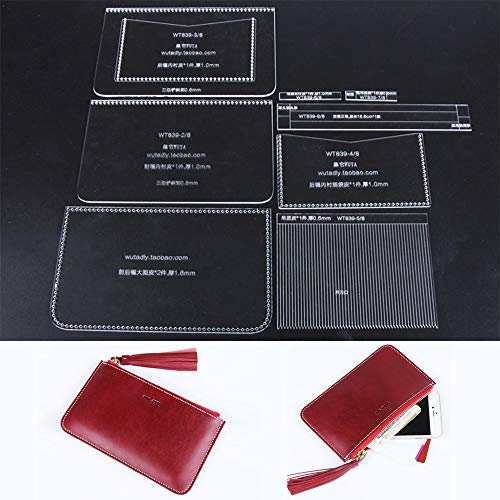Ever found yourself eyeing that perfect handbag online but hesitated to click ‘buy’ because you weren’t quite sure if it’d fit all your essentials? You’re not alone. Getting the size right is crucial, and guesswork just won’t cut it.
Why accurate measurements are important for handbags
Accurate measurements are the key to unlocking the perfect handbag experience. Imagine spending your hard-earned money on a bag that ends up being too small for your daily essentials or too bulky for your frame. That’s why precision matters. Knowing the exact dimensions ensures the handbag fits your lifestyle and body type like a glove.
Height, width, and depth are the three critical dimensions to consider. They dictate not just how much you can carry, but also how the bag will rest against your body. A handbag’s shape and size should complement your silhouette, not work against it. Oversized bags can overwhelm petite frames, while tiny clutches might look out of place on taller figures.
Here’s something to ponder: a bag’s handle or strap length can make or break its functionality. Too short, and a shoulder bag might become an uncomfortable arm clutch. Too long, and your tote might drag on the floor. Your handbag shouldn’t just carry your items; it should fit your carrying style seamlessly.
Let’s look at the practical side. Handbags often serve as protective vessels for gadgets. A tablet or laptop needs a snug fit for safety; loose compartments invite jostles and possibly damage. Organized compartments are not mere features but necessities for sorting and quick access. Your bag’s layout affects how you interact with your everyday gear.
Storage is another consideration. A bag that can’t stand up to regular use isn’t worth it. Materials and construction need to withstand the weight of your belongings without losing shape. Accurate measurements guide you toward handbags that promise longevity and durability.
In sum, understanding a handbag’s scale and proportions ensures it meets your expectations, both in style and function. Always remember, the right fit elevates a handbag from a mere accessory to a daily companion that enhances your routine.
Understanding the different dimensions of a handbag
When you’re delving into the world of handbags, getting your head around the different dimensions is key. Consider this a mini crash course in handbag geometry.
Height, first off, is measured from the bottom to the top of the bag. It’s what dictates whether a handbag will sit comfortably under your arm or hang lower towards your waist. The width, measured from side to side, gives you a glimpse into the roominess of the bag. Will it fit that extra-large wallet or just the essentials?
The depth is the front-to-back measurement when looking at the handbag from the side. This often overlooked dimension can make a huge difference in functionality; too deep and you’re fishing for items, too shallow and you’re struggling to zip it closed.
Apart from the three basic measurements, let’s not forget the strap drop. That’s the length from the top of the strap to the top of the bag when it’s hoisted up. This determines how the bag will fit over your shoulder – crucial for your carrying comfort.
Here’s a quick look at what you need to measure:
- Height: Bottom to top of the bag
- Width: Side to side
- Depth: Front to back
- Strap Drop: Top of the strap to the top of the bag when lifted
Armed with these measures, you can compare with your current go-to bag. Does that new tote you’re eyeing match up? Is the crossbody you’re considering larger or smaller? Knowing these dimensions ensures you won’t be caught off-guard when your purchase arrives.
Remember that the size of a handbag also affects its visual impact. A large bag may overwhelm a petite frame, while a small clutch could look out of proportion on a taller silhouette. It’s all about scale and finding that perfect balance that complements your individual style.
Measuring the length of a handbag
When you’re sizing up a potential new addition to your collection, the length of a handbag is a critical dimension. It’s essentially the horizontal distance across the front of the bag. Grab a flexible tape measure; make sure it’s one that can easily wrap around curves and corners.
Start at the leftmost edge and extend the tape across to the rightmost edge, keeping it parallel to the base of the handbag. This is usually done at the longest part of the bag, which could be the base or center, depending on the design. Accuracy is key here; even a small error could impact how the handbag fits with your day-to-day style.
Here’s a quick checklist to ensure precision:
- Ensure the bag is empty and laid on a flat surface to avoid any sagging or misshaping.
- Measure the length, not along any curves or contours, but in a straight line.
- Always measure from the furthermost points on each side.
The length of your handbag influences not only the look but also its practicality. Bigger bags hold more, but you don’t want something that overwhelms your frame or is cumbersome. Keep in mind that online retailers may round up measurements to the nearest inch, so getting as precise as possible at home ensures you know what you’re getting.
If you’re after certain styles like clutches or satchels, dimensions may indicate if the bag can accommodate your essentials like phones, wallets, and other necessities. Remember, photos can be deceiving; sizes seem different in isolation without context. It’s always better to trust your own tape measure than a picture on a screen.
« Where Can I Repair My Handbag? DIY Fixes to Restore Your Favorite Accessory
How to Stop Handbag from Peeling: Preserve Your Purse’s Elegance »
Sure, you could eyeball it, but why risk the inconvenience of a return? By taking the time to measure the length of a handbag yourself, you ensure that your next purchase is not only stylish but satisfies your space requirements.
Determining the width of a handbag
When you’ve got the length down, the next measurement on your radar should be the width. This is crucial because the width impacts how much the bag can carry without looking overstuffed. Plus, a wider handbag might not sit as comfortably under your arm.
So first, find the bottom of the bag. Place it flat on a surface, ensuring it’s not slouched or folded. You’ll measure from one side to the other, at the bag’s broadest point. Grab your tape measure and stretch it across the bottom of the bag. Make sure it’s perfectly horizontal; any angle can throw off your measurement.
Keep your tape measure taut but not tight—you’re not looking to compress the bag, just get an accurate read. Note down the measurement and round it off to the nearest quarter of an inch for precision.
Visualize the bag’s use. Will you be carrying books, a laptop, or just essentials? This perspective helps determine if the width is appropriate for your needs. Here’s a handy reference table to guide you:
| Item | Approximate Width Required |
|---|---|
| Tablet | 7 inches |
| Standard Laptop | 13 inches |
| Books & Folders | 10-12 inches |
Remember, the sides of your handbag will give a bit, so you’ve got some leeway with the width. And if you’re between sizes, opt for a little larger to avoid overstuffing. When you’re browsing online, compare your measurements to the listed dimensions—don’t be swayed by how wide the bag looks on a model. Trust your numbers, they’re your most reliable shopping companion.
Calculating the depth of a handbag
Once you’ve nailed down the width, you’ll want to tackle the depth—it’s key in determining how much your handbag can hold. Depth is measured from the front to the back panel at the bag’s base. It dictates the profile and how it sits against the body. Think slim for a sleek look or wide for more storage.
To measure, place your bag with the bottom facing up. Flatten any side pockets to ensure they don’t skew your measurement. Now, use a tape measure or a ruler to get the distance between the front panel and the back panel. Measure along the bottom’s center; that’s usually the deepest point.
Remember, the handbag’s capacity isn’t purely its depth. The width and height play equal parts, but depth gives you an idea of the bag’s potential to expand or stretch when filled. So, don’t judge a bag solely by its depth.
Be mindful of the bag’s material. Stiffer materials retain shape but limit expansion, while softer ones offer more give. The table below shows common handbag depths and their general uses:
| Handbag Depth (inches) | Typical Use |
|---|---|
| 2-3 | Evening bags, clutches |
| 4-6 | Daily use, casual handbags |
| 7+ | Travel bags, work briefcases |
Stick to these facts, and you’ll avoid surprises when unpacking your online purchase. By understanding the depth, you’ll better gauge how a handbag will meet your daily needs or special occasion requirements. Remember to account for any extra features that add to the depth, like external compartments or padding, which can deceive the eye but are essential for functionality. Keep this in mind, and you’ll master the handbag hunt with ease.
Conclusion
So there you have it! Measuring the depth of your handbag is just as crucial as its length and width. Remember, it’s all about finding the perfect balance between style and practicality. Keep in mind the material of your bag and how it might affect the overall dimensions. With these tips, you’ll be able to confidently choose a handbag that won’t just look great but will also suit your everyday needs. Happy shopping and enjoy flaunting your perfectly proportioned accessory!
Frequently Asked Questions
How do you measure the depth of a handbag?
To measure the depth of a handbag, you should measure from the front to the back panel at the base of the bag. Place your measuring tape on the bottom interior and extend it straight to the opposite side.
Why is the depth of a handbag important?
The depth of a handbag is important because it affects the bag’s capacity and determines how the bag will sit against the body. It’s crucial for ensuring the bag meets your space and comfort needs.
Does the material of the handbag affect its depth measurement?
Yes, the material of the handbag affects its depth measurement. Stiffer materials retain the bag’s shape and limit expansion, while softer materials may offer more flexibility and may change the perceived depth when the bag is filled.
What should you consider when choosing a handbag’s depth online?
When choosing a handbag’s depth online, consider the bag’s material and how much you need to carry. Use a reference table for guidance and remember that stiffer materials can’t expand much, while softer materials can stretch to accommodate more items.
How can you avoid surprises with the size of your online handbag purchase?
To avoid surprises, carefully read the product descriptions, check the provided dimensions, consider the handbag’s material, and use the article’s step-by-step guide to compare the measurements with your current handbag. This helps you better visualize how the handbag will meet your needs.











